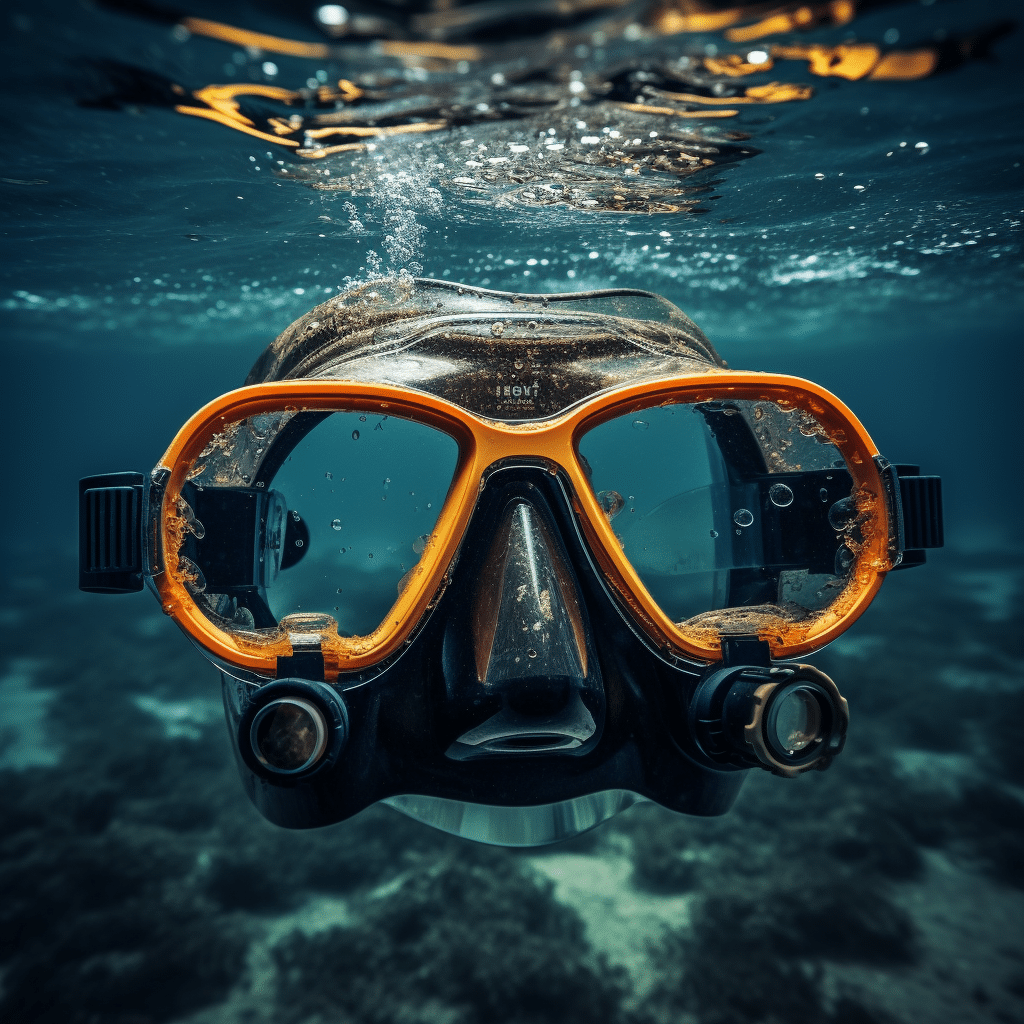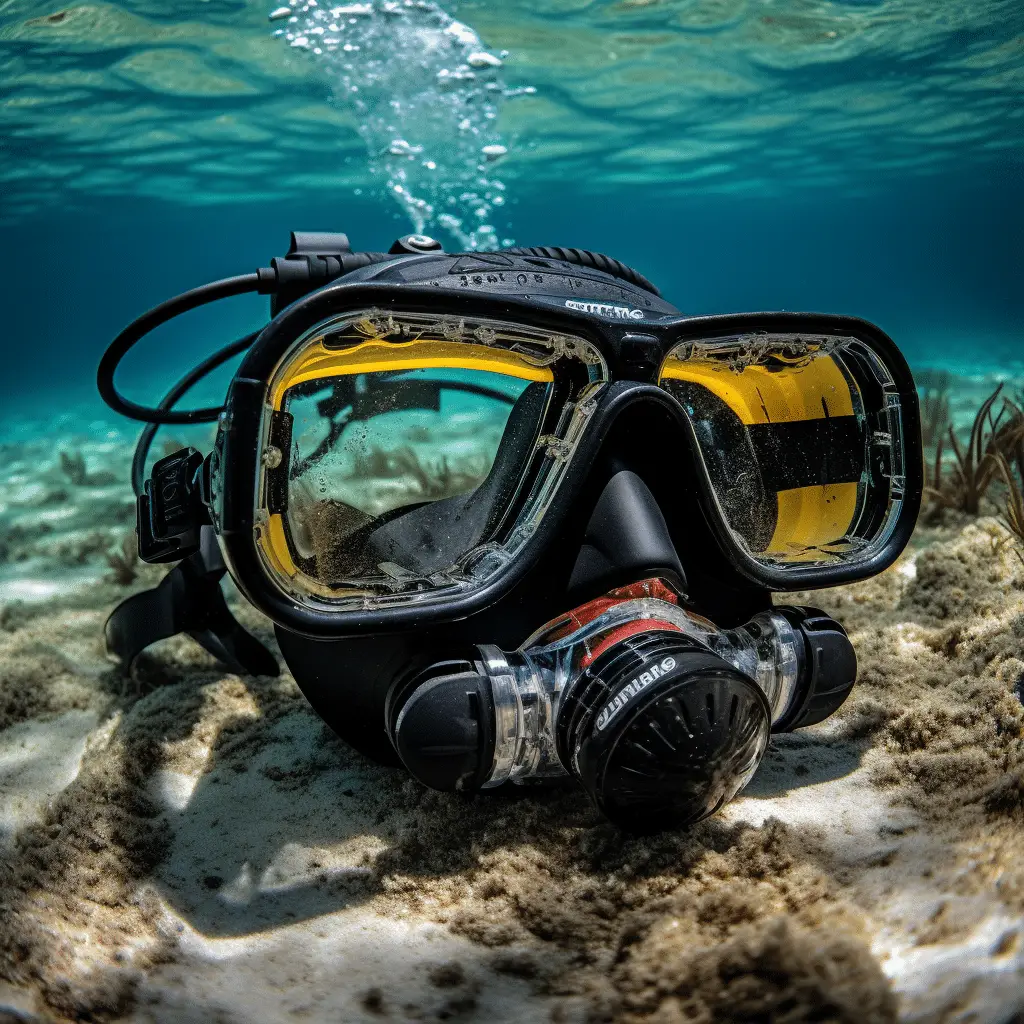Diving binoculars are essential equipment for underwater exploration, allowing divers to observe and explore the depths of the ocean with enhanced vision. When choosing binoculars for marine use, there are several key factors to consider. The binoculars should be equipped with waterproof optics and be fog-resistant to withstand the conditions underwater. It is important to have a good quality lens with a high level of contrast and compatibility with low light conditions. The magnification power should be appropriate for long-distance viewing, with a recommended power of 10x for objects further away. The objective lens diameter should be wide enough to allow sufficient light to enter the binoculars. It is also essential to consider the weight of the binoculars to prevent eye strain during prolonged usage. Fortunately, there are several models available on the market that are specifically designed for diving and underwater exploration, offering features such as waterproofing, fog-resistance, and optimal performance for marine activities. Some top recommendations include the Bushnell H2O Waterproof/Fogproof Porro Prism Marine Binocular, the BARSKA Deep Sea 7 x 50 Waterproof Floating Marine Binocular, and the Fujinon Mariner 7 x 50 WPC-XL Porro Prism Binocular, among others.
Key Takeaways:
- Choose diving binoculars with waterproof optics and fog-resistant capabilities for underwater exploration.
- Opt for binoculars with a high level of contrast and compatibility with low light conditions.
- Select a magnification power of 10x or higher for long-distance viewing.
- Ensure the objective lens diameter is wide enough to allow sufficient light to enter the binoculars.
- Consider the weight of the binoculars to prevent eye strain during prolonged usage.
Key factors to consider when choosing diving binoculars

When choosing diving binoculars for underwater exploration, it is crucial to consider several key factors that will enhance your visual experience underwater. The first and foremost factor is the waterproof and fog-resistant capabilities of the binoculars. Given the wet and humid conditions underwater, it is essential to invest in optics that can withstand such environments. Look for binoculars specifically designed with waterproof seals and coatings to ensure they remain functional and clear even when submerged.
Another important factor is the quality of the lens. Opt for binoculars with a high level of contrast lens, as this will enhance the clarity of the images you observe underwater. Additionally, ensure that the binoculars have low light compatibility, enabling you to see objects clearly even in dimly lit environments. These features are especially crucial for diving and underwater exploration, where visibility might be compromised.
Magnification power is another aspect to consider when choosing diving binoculars. For long-distance viewing, a recommended magnification power of 10x or higher is ideal. This will allow you to observe objects that are further away with greater detail. It is also important to take into account the objective lens diameter, as this determines how much light can enter the binoculars. A wider diameter will provide a brighter image, especially in low light conditions. Ideally, the objective lens diameter should follow a ratio of 5 in relation to the magnification power.
Diving binoculars
Lastly, weight plays a significant role in the comfort and usability of diving binoculars. Prolonged usage can lead to eye strain, so it is essential to choose a pair that is lightweight and easy to handle. Consider binoculars made from durable yet lightweight materials that won’t add unnecessary strain or discomfort during your underwater adventures.
| Key Factors to Consider | Recommended Features |
|---|---|
| Waterproof and fog-resistant capabilities | Sealed and coated optics |
| Quality of the lens | High contrast lens, low light compatibility |
| Magnification power | 10x or higher for long-distance viewing |
| Objective lens diameter | Wide diameter for sufficient light |
| Weight | Durable and lightweight materials |
Recommended binocular models for marine use
When it comes to finding the best binoculars for diving and underwater exploration, there are several top-quality models available on the market that are specifically designed for marine use. These binoculars provide optimal performance and durability for underwater exploration, ensuring that divers can enhance their vision and make the most of their aquatic adventures.
One such model is the Bushnell H2O Waterproof/Fogproof Porro Prism Marine Binocular. This binocular is specifically engineered for marine environments, offering waterproof and fog-resistant properties that make it perfect for underwater observation. With a high contrast lens and compatibility with low light conditions, divers can experience clear and crisp visuals even in challenging lighting situations.
The BARSKA Deep Sea 7 x 50 Waterproof Floating Marine Binocular is another excellent choice for divers. This binocular is not only waterproof, but it also floats on the water’s surface, providing added convenience and peace of mind. With its 7x magnification power and wide objective lens diameter, this binocular offers a remarkable field of view, making it ideal for spotting marine life and exploring the underwater world.
Binocular models
If you’re looking for exceptional quality and performance, the Fujinon Mariner 7 x 50 WPC-XL Porro Prism Binocular is worth considering. This binocular is designed with marine use in mind, featuring a durable construction that can withstand harsh conditions. With its 7x magnification, it allows for precise and detailed observations, while the wide objective lens diameter ensures ample light transmission for bright and clear images.
| Model | Features |
|---|---|
| Bushnell H2O Waterproof/Fogproof Porro Prism Marine Binocular | Waterproof, fog-resistant, high contrast lens, compatibility with low light conditions |
| BARSKA Deep Sea 7 x 50 Waterproof Floating Marine Binocular | Waterproof, floats on water, 7x magnification, wide objective lens diameter |
| Fujinon Mariner 7 x 50 WPC-XL Porro Prism Binocular | Durable construction, 7x magnification, wide objective lens diameter |
These recommended binocular models provide divers with the essential features and capabilities needed for successful underwater exploration. Whether you’re a seasoned diver or a beginner, investing in the right binoculars can greatly enhance your overall experience and allow you to fully appreciate the beauty of the underwater world.
Tips for Using Diving Binoculars Effectively

To ensure a successful and enjoyable underwater exploration experience, it is important to use diving binoculars effectively by following these tips and guidelines. By implementing these practices, you can prevent eye strain, maintain proper handling and care of your binoculars, ensure optimal performance, and extend the lifespan of your equipment.
Preventing Eye Strain:
When using diving binoculars for extended periods, it is crucial to take regular breaks to rest your eyes. Prolonged viewing can cause eye strain and discomfort. Additionally, adjusting the focus and diopter settings to suit your eyesight can help reduce eye fatigue.
Proper Handling and Care:
Diving binoculars should be handled with care to avoid damage. Always use a neck strap or harness to secure the binoculars while diving to prevent accidental drops. When not in use, store them in a protective case to shield them from scratches or impact. Avoid exposing the binoculars to extreme temperatures or harsh conditions that could compromise their performance.
Cleaning and Maintenance:
Rinse your diving binoculars with freshwater after each use to remove any salt or debris that may have accumulated. Use a soft, lint-free cloth to gently wipe the lenses and body. Avoid using harsh chemicals or abrasive materials as they can damage the optics. Regularly check and tighten screws, and apply lubrication if necessary to keep the moving parts in good working order.
Adjusting the Focus:
Before diving, ensure that the binoculars are adjusted to your preferred focus setting. This will enable you to quickly and accurately view objects underwater without straining your eyes. Practice adjusting the focus in a controlled environment to familiarize yourself with the mechanism so you can easily adapt to varying underwater conditions.
Calibrating the Diopter:
The diopter adjustment allows you to compensate for any difference in vision between your eyes. It is essential to calibrate the diopter to achieve clear and balanced vision through the binoculars. Take the time to properly set the diopter before each dive to ensure optimal viewing clarity.
By following these tips for using diving binoculars effectively, you can enhance your underwater exploration experience and make the most out of your equipment. Taking care of your binoculars and using them correctly will not only improve your vision but also prolong the lifespan of your investment, allowing you to enjoy many more underwater adventures to come.
| Binocular Model | Features |
|---|---|
| Bushnell H2O Waterproof/Fogproof Porro Prism Marine Binocular | Waterproof and fog-resistant, high contrast lens, 10x magnification, 50mm objective lens diameter |
| BARSKA Deep Sea 7 x 50 Waterproof Floating Marine Binocular | Waterproof and fog-resistant, high contrast lens, 7x magnification, 50mm objective lens diameter |
| Fujinon Mariner 7 x 50 WPC-XL Porro Prism Binocular | Waterproof and fog-resistant, high contrast lens, 7x magnification, 50mm objective lens diameter |
Conclusion
Investing in high-quality diving binoculars is crucial for enhancing your underwater exploration experience, allowing you to see the unseen and uncover the wonders of the deep ocean.
When it comes to finding the best binoculars for diving and underwater exploration, there are several key factors to consider. Waterproof and fog-resistant optics are essential for withstanding the harsh conditions underwater, ensuring that your binoculars remain functional and provide clear vision throughout your aquatic adventures.
Another important aspect to look for is a lens with a high level of contrast, which will enhance your ability to spot marine life and explore the vibrant colors of the underwater world. Compatibility with low light conditions is also crucial, as diving often involves exploring in darker environments.
Furthermore, the magnification power of your binoculars should be appropriate for long-distance viewing. A recommended power of 10x will allow you to observe objects that are further away, giving you a closer look at the fascinating marine life that surrounds you. Additionally, the objective lens diameter should be wide enough to allow sufficient light to enter the binoculars, ideally following a ratio of 5 in relation to the magnification.
FAQ
What factors should I consider when choosing binoculars for diving and underwater exploration?
When choosing binoculars for diving and underwater exploration, it’s important to consider factors such as waterproof and fog-resistant capabilities, a high contrast lens for optimal visibility in low light conditions, appropriate magnification power for long-distance viewing, and a wide objective lens diameter to allow sufficient light. Additionally, the weight of the binoculars should be taken into account to prevent eye strain.
Can you recommend any specific binocular models for marine use?
There are several binocular models available on the market that are specifically designed for marine use. Some popular options include the Bushnell H2O Waterproof/Fogproof Porro Prism Marine Binocular, the BARSKA Deep Sea 7 x 50 Waterproof Floating Marine Binocular, and the Fujinon Mariner 7 x 50 WPC-XL Porro Prism Binocular. These models offer waterproofing, fog-resistance, and other features suited for underwater exploration.
What are some tips for using diving binoculars effectively?
To use diving binoculars effectively, it’s important to prevent eye strain by taking breaks during prolonged usage. Proper handling and care of the binoculars, including cleaning and maintenance, can also help maintain their performance. Adjusting the focus and calibrating the diopter as needed will ensure optimal viewing experience.
